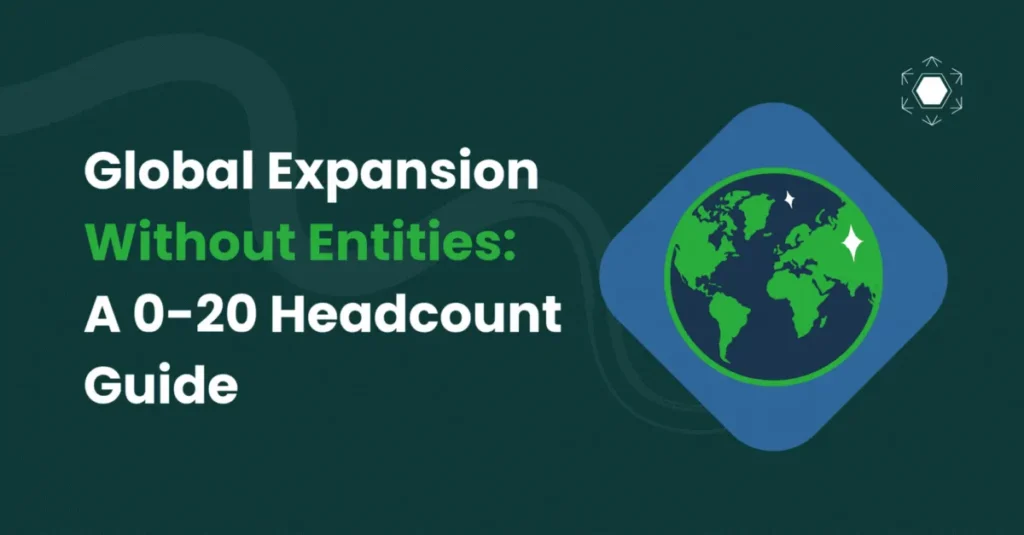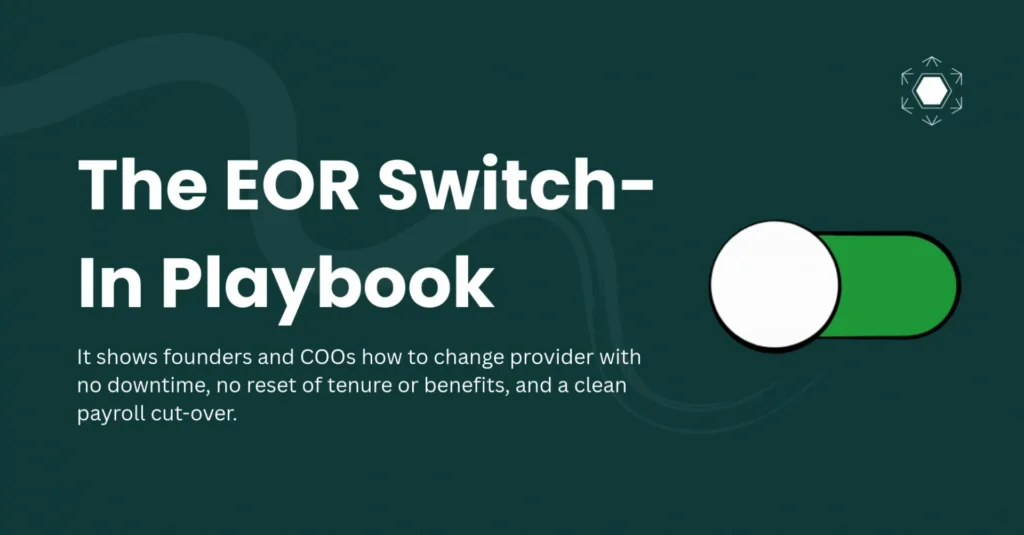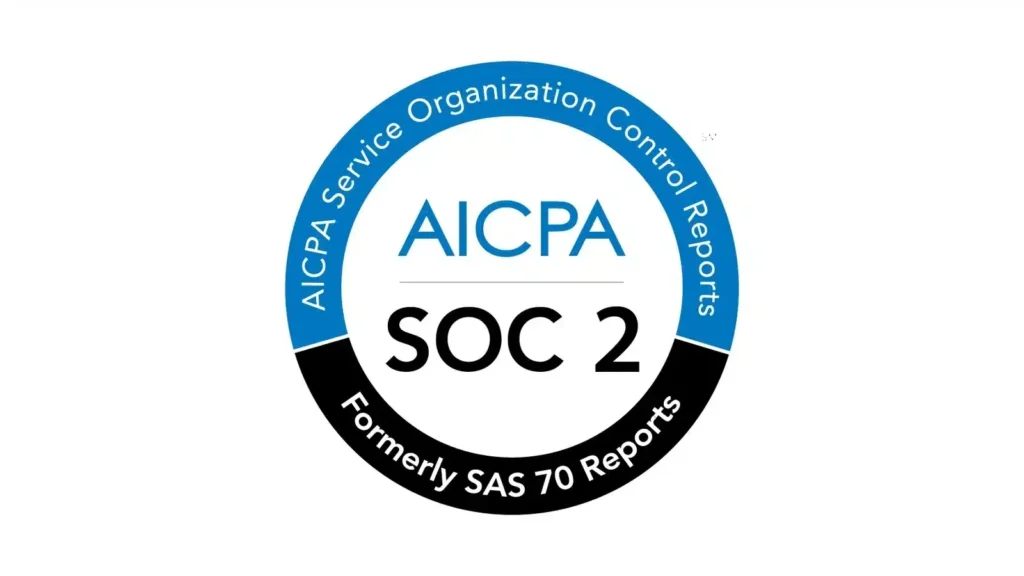Kirsty Jarvis, CEO and Founder at a tech PR agency, Luminous PR.
For ambitious companies expanding internationally, the move presents not only a huge opportunity but a huge challenge too. You’re not just opening offices, you’re entering new talent markets, each with its own expectations, culture and cues – many of which will be unknown.
Here’s what we do know: a message that resonates in one region may fall flat in another and that’s where many fast-growth brands lose momentum.
This article from Kirsty Jarvis, founder and CEO of Luminous PR, explores how strategic PR can help you build cultural relevance, visibility and trust in your ‘employer brand’, wherever your next hire may be.
The global talent race has changed
The race for top talent has gone global and it’s more intense than ever. It’s no longer enough to dangle high salaries. Today’s skilled professionals carefully vet a prospective employer’s culture, values and reputation before even considering an offer.
In fact, studies show the vast majority of job seekers research an employer’s reputation and brand before they apply. LinkedIn data found about 75% do so. Similarly, Glassdoor reports 86% of candidates read company reviews and ratings to decide where to apply.
The takeaway? Your next great hire is likely scrutinising your public image right now.
Traditional recruitment marketing alone no longer makes the cut. To win in this new landscape, fast-growth tech companies must build an employer brand that resonates across cultures – and strategic PR is emerging as the not-so-secret weapon.
Public relations shapes how the world sees your company, including potential hires. When done right, PR amplifies your workplace culture and employee value proposition (EVP), helping you stand out in a crowded global talent marketplace. A strong, culturally relevant employer brand doesn’t just attract talent, it also delivers hard business results.
Data shows that a strong employer brand can reduce cost-per-hire by up to 50% and that employers actively investing in brand reputation reduce turnover by as much as 28%. So, companies with positive employer reputations can dramatically cut hiring costs and turnover.
Global brand, local relevance
Building a global employer brand doesn’t mean pushing a one-size-fits-all message everywhere. Global brand success comes from local relevance. As you expand into new regions, you need to align your core values with local cultural norms and expectations. This requires finesse: maintaining a unified identity as an employer of choice, while adapting tone and content to resonate with each market’s unique talent pool.
Effective localisation goes beyond translating language; it means adjusting your messaging to local values, customs and even lifestyle references, all while avoiding inauthenticity.
How can PR help build local relevance? By telling localised stories through local channels. Campaigns that feature employees from diverse markets tend to resonate better, especially when those narratives align with regional aspirations and norms.
By adapting your employer brand message to fit local values without diluting your core identity, you’ll demonstrate cultural intelligence and earn the trust of talent from communities around the world.
Visibility earns you credibility
In employer branding, visibility breeds credibility. You might have a fantastic internal culture, but if nobody outside your company knows about it, it’s not helping your talent attraction.
The good news is that PR can shine a spotlight on your culture and values with far more credibility than any job ad you could buy. PR is essentially the megaphone for your employer brand, amplifying authentic workplace stories through trusted third-party sources. Unlike traditional recruitment ads, PR builds credibility through third-party validation and genuine narratives.
Every time your company is featured in an article about great workplaces, or wins a respected industry award, it’s an earned endorsement of your employer brand. During the application process, 59% of people check a company’s website and social media for cultural signals and the same proportion look for recent news stories about the company. Every positive news article or ‘Best Workplace’ list you’re on is essentially recruiting on your behalf and is far more persuasive than your ‘About Us’ page.
The lesson? Visibility is believability, which builds credibility.
Speak to values that matter locally
Winning the hearts and minds of the talent pool means speaking to what they value – especially the values that resonate in their local context.
1. Ethics and corporate social responsibility (CSR)
We know that, across the board, many employees care deeply about purpose, balance and impact. A recent survey of job seekers confirms that money isn’t always the main driver. Nearly half of workers (46%) would prioritise working for an ethical, responsible company over taking a higher salary.
Many people also consider a company’s broader impact. Corporate social responsibility (CSR) holds weight: over half of employees surveyed said they want to work for a company involved in community initiatives and 46% look for businesses with a clear ESG (environmental, social, governance) policy.
Nordic countries vs Southeast Asia
In Nordic countries, sustainability is often seen as a baseline expectation, whereas in Southeast Asia, community upliftment and job creation may carry more weight.
Germany vs South America
German professionals often look for environmental accountability backed by certifications, while in South America, CSR efforts focused on education and social mobility can drive deeper connection and brand loyalty.
UK vs Middle East
In the UK, CSR is often tied to transparent reporting and ethical governance, whereas in parts of the Middle East, philanthropy and civic contributions aligned with cultural and religious values tend to resonate more strongly.
2. Work-life balance
Likewise, 62% of people value better work-life balance over higher pay and 53% want the option to work remotely as a key factor in choosing an employer.
Japan vs France
In Japan, overwork culture makes corporate wellbeing programmes especially resonant, while in France, generous leave policies are seen as a sign of respect for employee time.
US vs Netherlands
In the US, work-life balance initiatives often emphasise flexibility and choice, such as remote working and flexible hours, while in the Netherlands, there’s a strong cultural emphasis on shorter working hours and clearly protected personal time.
India vs Australia
In India, balancing family commitments and professional growth is a key concern, making employer support for elder care or parenting especially valued, while in Australia, the focus is more on outdoor lifestyle and time off to recharge.
3. Diversity and inclusivity
Diversity and inclusivity are similarly pivotal – 57% said a commitment to D&I is important when deciding where to work. What do these numbers mean for your PR and employer branding strategy? You need to walk the talk on values – and broadcast those stories loudly.
US vs Germany
In the US, race and gender equity are top of mind, while in countries like Germany, neurodiversity and age inclusivity are more commonly discussed.
UK vs Japan
In the UK, D&I strategies often focus on social mobility and equitable access across education and class divides, while in Japan, diversity efforts are increasingly focused on gender representation in leadership and inclusive workplace norms.
Canada vs India
In Canada, D&I initiatives often celebrate multiculturalism and LGBTQ+ inclusion, while in India, regional, linguistic and caste diversity are key factors in building inclusive hiring and workplace strategies.
Leadership presence is part of your employer brand
An often overlooked fact: your leadership team is the living, breathing embodiment of your employer brand. In fast-growth companies, founders and executives set the tone for culture. How they lead and communicate – internally and in public – profoundly shapes how current and prospective employees perceive the company. As I wrote in my Forbes article, when it comes to communications, the founder’s voice can be incredibly powerful.
If you want to build a credible, relatable employer brand, your leaders need to be visible champions of your culture and values. This means moving beyond just the CEO quote in a press release about funding and leveraging leadership communications in a more human and strategic way.
-
- Make leadership visibility a deliberate strategy
– Don’t treat leadership comms as optional or reactive. Build them into your employer brand and PR strategy.
– Identify which leaders (beyond the CEO) can authentically speak to your culture, values or ways of working. - Position leaders as employee advocates
– Encourage leaders to share real stories about employee success, team growth or inclusive practices.
– Show the leadership team engaging with employee experience, not just financial or product performance. - Invest in thought-leadership platforms
– Help your executives publish content on LinkedIn, participate in podcasts, panels and webinars, or write for industry publications.
– Focus on topics like remote work, culture innovation, wellbeing or D&I – the areas candidates care about. - Prioritise authenticity over polish
– Communication doesn’t have to be perfectly produced – it just needs to be real.
– Especially in difficult moments, honest, transparent leadership communication (like Chesky’s letter) can build trust, not break it. - Empower leaders to champion your people
– Not all leaders are natural communicators – but all can be powerful advocates when supported.
– Give them the tools, confidence and channels to spotlight the humans behind the business. That might mean media training, internal comms support or simple talking points to help them speak authentically about culture and team success.
– Encourage leaders to publicly recognise employees – in town halls, on social media or through internal newsletters. Use their voices to celebrate what your people are achieving, not just what the business is delivering.
– When leadership consistently advocates for employees, it sends a clear message: people matter at the top. - Monitor and measure impact
– Track engagement on leadership content (likes, shares, comments), gather employee sentiment through regular pulse surveys or anonymous feedback, and listen to candidate impressions during interviews.
– Look at hard metrics too – such as retention rates, Glassdoor reviews or changes in referral volumes – to spot patterns over time.
– Use those insights to evolve your approach and double down where the voice of leadership makes the biggest impact.
- Make leadership visibility a deliberate strategy
In many markets, leadership visibility carries different expectations. For instance, executives in the US are often expected to be bold public spokespeople, while in countries like Japan or Germany, humility, consensus-building or technical authority may matter more.
Your PR approach should reflect this. A strong employer brand in a new region may require elevating a local leader who embodies the company’s values in culturally resonant ways – not merely showcasing your global C-suite alone. Local comms support can help identify the right spokesperson, adapt tone and select the right platforms for maximum credibility.
Embed communications in your growth strategy
To scale successfully, your employer brand must travel well. That doesn’t mean replicating your message in every market – it means embedding culturally relevant communications into every step of your international growth strategy.
For fast-growing companies expanding across borders, employer branding is not an HR side project. It’s a core component of business success. Every new market entry, funding round or product launch is more than a simple commercial milestone – it’s a people moment. And each one is an opportunity to earn the trust of local talent.
Your employer brand communications must be more than just translated – they must be transcreated for each geography. Messaging that resonates in London may be met with silence in Tokyo or confusion in Berlin. To succeed globally, you need to show up locally.
Here are some tips:
- Lead with local leadership
– Prospective hires respond best to leaders who understand their regional context. Featuring local leadership – not just global executives – makes your employer brand feel grounded, authentic and committed to the market. - Build comms into every market entry
– Every business milestone in a new region is a chance to tell a culturally relevant talent story. Use local media, voices and platforms to spotlight your values, culture and employee experience in ways that resonate regionally. - Partner with local PR experts
– Avoid cultural missteps by working with in-market PR professionals. They know how to tailor messaging to local norms, build trust through appropriate channels and avoid tone-deaf campaigns that undermine your brand. - Align external messaging with local realities
– Global values only build credibility when they match local experience. Regularly check how your employer brand is perceived in each market and adjust messaging to ensure it reflects what employees actually encounter day to day. - Integrate PR and HR globally and locally
– Collaboration between HR and PR is essential across headquarters and regional teams. Co-create flexible messaging frameworks, share hiring insights and equip local teams to adapt content without losing brand consistency. - Measure what matters, market by market
– Success metrics will vary by geography. Monitor local engagement, media coverage and candidate feedback to understand what messages work where – and refine your strategy for each audience accordingly. - Employer brand is a growth lever
– Scaling globally means earning trust locally. A culturally aware, locally led employer brand builds connection and credibility in new markets – helping you attract the right talent and grow with intention.
Think beyond brand and build local relevance
You already have an employer brand. The real question is whether you’re shaping it deliberately or leaving it to chance.
In a world where top talent can choose from opportunities across continents, what you say – and how you say it – matters. Today’s candidates are looking for more than a job description. They’re looking for leadership they can trust, values they recognise and a company culture that feels real, not rehearsed.
This isn’t about glossy branding. It’s about building emotional connection, market by market, through strategic, culturally aware communication. When your employer brand reflects the lived experience of your people – and your PR makes that visible to the right audiences – you create more than awareness. You create trust.
The opportunity is significant: a compelling employer brand reduces hiring friction, attracts mission-aligned talent and improves retention. But it only works if it feels human, credible and consistent.
So audit where you are. Map where you’re heading. Start small if needed – one founder LinkedIn post, one local media story, one employee spotlight. Then build. Partner PR with HR to amplify the culture you’re proud of. Encourage your leadership team to show up, speak out and share what matters.
Because when you get this right, you won’t just fill roles, you’ll fill them with people who believe in what you’re building.
Luminous PR is a specialist tech PR agency delivering strategic communication services to support business growth.




